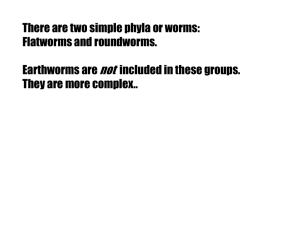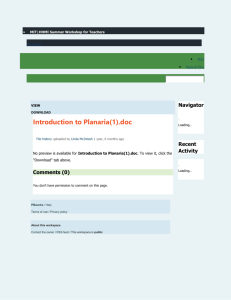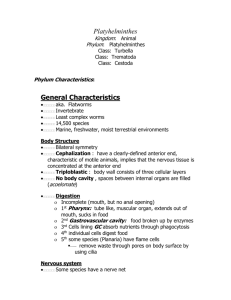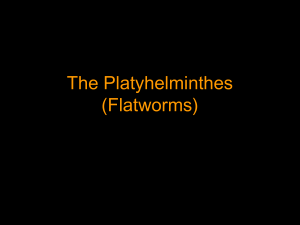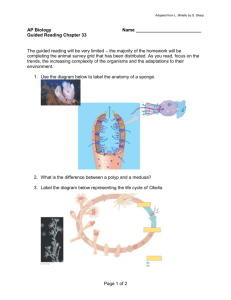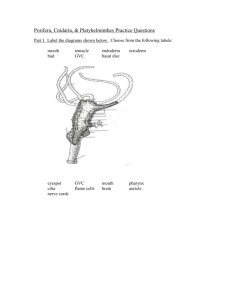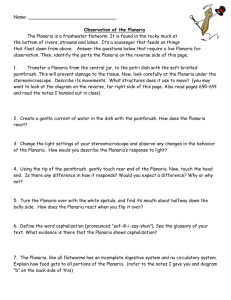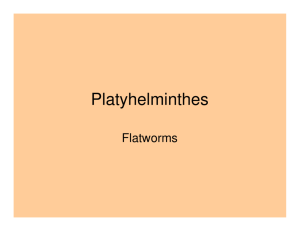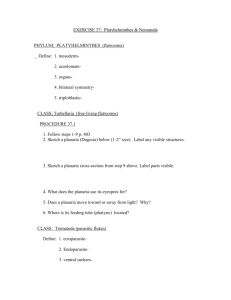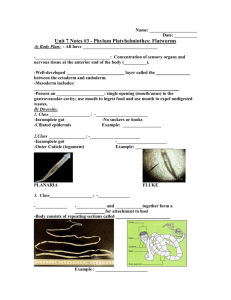Platyhelminthes Lab Procedure
advertisement
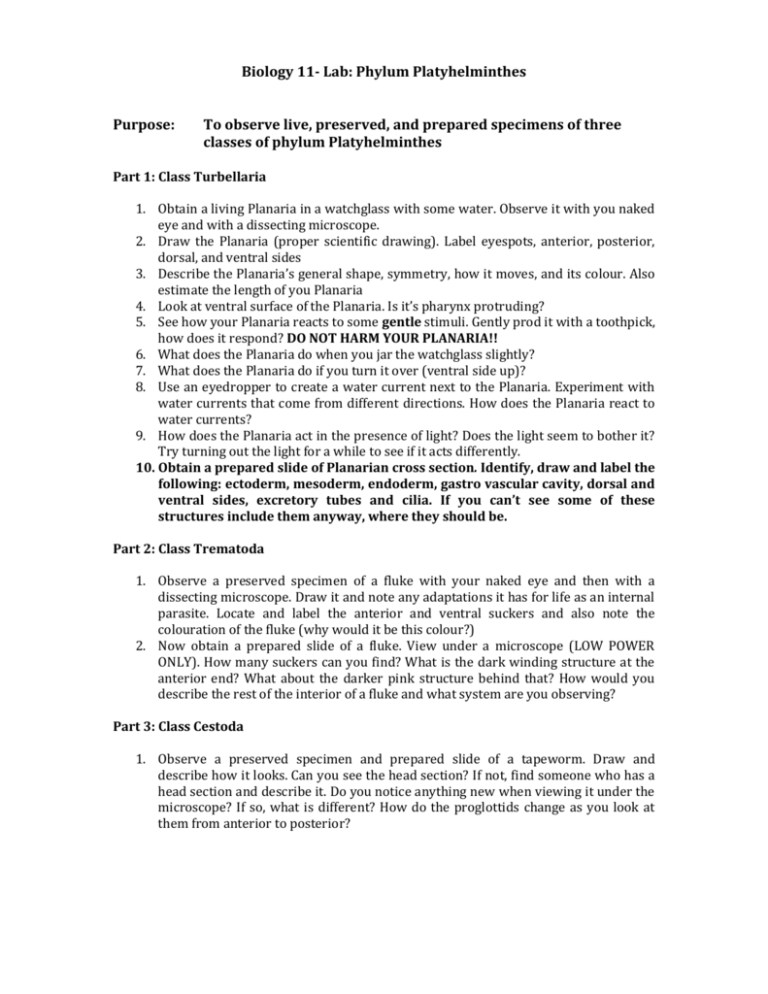
Biology 11- Lab: Phylum Platyhelminthes Purpose: To observe live, preserved, and prepared specimens of three classes of phylum Platyhelminthes Part 1: Class Turbellaria 1. Obtain a living Planaria in a watchglass with some water. Observe it with you naked eye and with a dissecting microscope. 2. Draw the Planaria (proper scientific drawing). Label eyespots, anterior, posterior, dorsal, and ventral sides 3. Describe the Planaria’s general shape, symmetry, how it moves, and its colour. Also estimate the length of you Planaria 4. Look at ventral surface of the Planaria. Is it’s pharynx protruding? 5. See how your Planaria reacts to some gentle stimuli. Gently prod it with a toothpick, how does it respond? DO NOT HARM YOUR PLANARIA!! 6. What does the Planaria do when you jar the watchglass slightly? 7. What does the Planaria do if you turn it over (ventral side up)? 8. Use an eyedropper to create a water current next to the Planaria. Experiment with water currents that come from different directions. How does the Planaria react to water currents? 9. How does the Planaria act in the presence of light? Does the light seem to bother it? Try turning out the light for a while to see if it acts differently. 10. Obtain a prepared slide of Planarian cross section. Identify, draw and label the following: ectoderm, mesoderm, endoderm, gastro vascular cavity, dorsal and ventral sides, excretory tubes and cilia. If you can’t see some of these structures include them anyway, where they should be. Part 2: Class Trematoda 1. Observe a preserved specimen of a fluke with your naked eye and then with a dissecting microscope. Draw it and note any adaptations it has for life as an internal parasite. Locate and label the anterior and ventral suckers and also note the colouration of the fluke (why would it be this colour?) 2. Now obtain a prepared slide of a fluke. View under a microscope (LOW POWER ONLY). How many suckers can you find? What is the dark winding structure at the anterior end? What about the darker pink structure behind that? How would you describe the rest of the interior of a fluke and what system are you observing? Part 3: Class Cestoda 1. Observe a preserved specimen and prepared slide of a tapeworm. Draw and describe how it looks. Can you see the head section? If not, find someone who has a head section and describe it. Do you notice anything new when viewing it under the microscope? If so, what is different? How do the proglottids change as you look at them from anterior to posterior?
